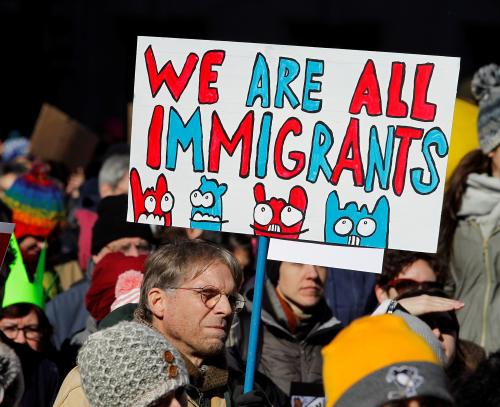In Unpacked, Brookings experts provide analysis of Trump administration policies and news.
The issue
President Trump issued a revised executive order on refugees and visas after his first order was blocked by federal courts. The new order includes a travel ban that’s less broad and more flexible, but it will still face legal battles in several states.
The [revised executive order] is a much more defensible piece of work, and because it applies less broadly, it will be easier to defend in court.
The things you need to know
- On February 9, 2017, the 9th Circuit Court of Appeals upheld a lower federal court’s decision to block President Trump’s executive order barring citizens from seven majority Muslim countries and refugees from entering the United States.
- The Trump administration issued a revised executive order that reflects the first order’s failures, which was originally set to go into effect on March 16, 2017.
- There are several key differences between the old executive order and the new one.
- First, certain categories of people are exempt from the order. The initial order applied to everyone from the countries on the list, but the new order excludes people with valid visas, permanent resident aliens, and others living in the United States lawfully.
- Second, the order applies to six countries: Iran, Syria, Yemen, Sudan, Libya, and Somalia, as opposed to seven. The original order also included Iraq.
- Third, the new order applies less broadly and is more flexible than the original order. Under the new order, visa officers and Customs and Border Protection officers have a measure of discretion in implementing the order. If there’s an instance when an officer believes that denying someone entry would cause undue hardship, they have discretion to waive the terms of the ban.
- The interagency process was shut out of the original ban, and relevant agencies were not able to review the order or discuss concerns.
- For the new order, relevant agencies had the opportunity to review and assess it, which resulted in a more defensible piece of work.
- Despite the improvements, the Trump administration is already facing lawsuits over the new travel ban from several states.
- The president and his staff’s rhetoric about the purpose of the previous order, (to serve as a Muslim ban), may provide states cause for litigation.




Commentary
Trump’s revised refugee and visas order
March 17, 2017